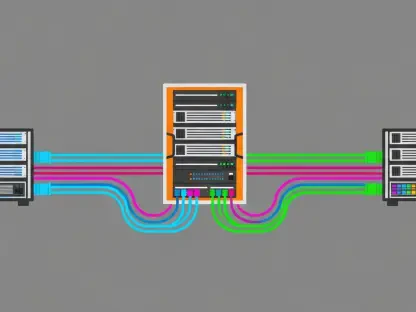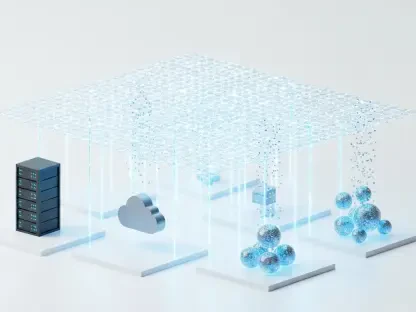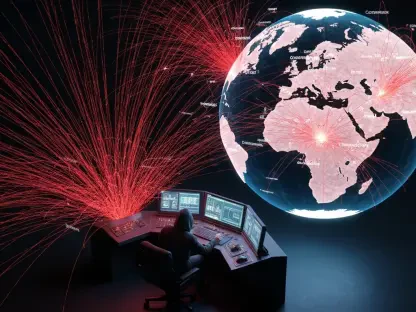Chloe Maraina is passionate about creating compelling visual stories through the analysis of big data. She is our Business Intelligence expert with an aptitude for data science and a vision for the future of data management and integration.
Can you tell us about your role as Director of Federal Technology & Innovation at Amazon Web Services?
As the Director of Federal Technology & Innovation at AWS, I lead a team dedicated to developing innovative solutions that support federal agencies in their mission-critical operations. We focus on leveraging cloud technology to enhance efficiency, security, and resilience across various domains, including space operations, logistics, and fraud prevention.
What inspired you to take on this position?
I’ve always been driven by a passion for technology and its potential to solve complex problems. This role allows me to work at the intersection of innovation and mission-critical needs, providing solutions that have a significant impact on national security and government operations.
What is Mission Innovation powered by AWS?
Mission Innovation powered by AWS is a program designed to position AWS as a trusted partner for government agencies by delivering cutting-edge solutions tailored to their unique challenges. It includes a range of initiatives and technologies developed to enhance federal operations.
How did the idea for Mission Innovation come about?
The idea was born out of a recognized need for more agile, secure, and efficient technologies to support government missions. We wanted to create an ecosystem where innovation could thrive through partnerships and co-development with federal agencies.
What were some of the key solutions developed under this program?
We’ve developed several key solutions under this program, including the Tactical Edge Mission Framework, the Supply Chain Command Center, the Zero Trust Accelerator, Document Workflow Automation, and FraudSafe. Each of these solutions addresses specific challenges within federal operations and enhances overall mission efficiency and security.
Could you elaborate on the Tactical Edge Mission Framework and its importance in austere environments?
The Tactical Edge Mission Framework is designed to provide reliable, secure, and resilient cloud services in environments where connectivity is limited or non-existent. This framework is crucial for operations in remote or hostile areas where traditional communications infrastructure may be unavailable.
How does the Supply Chain Command Center enhance logistics resilience?
The Supply Chain Command Center leverages advanced analytics and machine learning to provide real-time visibility and predictive insights into supply chain operations. This enhances the resilience and flexibility of logistics networks, ensuring they can respond quickly to disruptions.
What role does the Zero Trust Accelerator play in security?
The Zero Trust Accelerator is designed to strengthen security by ensuring that no device or user is trusted by default, regardless of whether they are inside or outside the network. This approach significantly reduces the risk of cyber threats by continuously verifying the integrity and identity of every interaction.
How does Document Workflow Automation improve process efficiency within federal agencies?
Document Workflow Automation streamlines the processing of documents through automation, reducing the time and effort required for manual handling. This leads to greater efficiency, accuracy, and compliance within federal agencies.
Can you explain how FraudSafe employs AI to prevent fraud?
FraudSafe uses advanced AI algorithms to detect and prevent fraudulent activities by analyzing patterns and identifying anomalies in real-time. It helps federal agencies to proactively combat fraud and protect sensitive information.
How does your team approach co-innovation with partners?
We approach co-innovation with a collaborative mindset, working closely with partners to understand their challenges and develop tailored solutions. This involves a continuous exchange of ideas, leveraging each other’s expertise to create innovative technologies that meet the specific needs of federal agencies.
What are some notable collaborations that have come out of these partnerships?
Notable collaborations include projects with various defense and space agencies, where we’ve co-developed solutions for satellite communications, tactical edge deployments, and secure data transmission. These efforts have significantly enhanced the operational capabilities of our partners.
How do these partnerships help bridge the gap between terrestrial and space technologies?
These partnerships enable us to merge innovations from both domains, creating integrated solutions that support seamless operations from the ground to space. By combining our expertise, we can develop technologies that enhance connectivity, data processing, and mission resilience across multiple environments.
How is AWS advancing the adoption of secure AI/ML in federal operations?
AWS is advancing secure AI/ML adoption by providing robust frameworks and tools that ensure data privacy and security. We work closely with federal agencies to implement machine learning models that can analyze vast amounts of data securely and generate actionable insights.
What potential do you see in the integration of AI and quantum computing?
The integration of AI and quantum computing holds enormous potential to revolutionize how data is processed and analyzed. Quantum computing can solve complex problems at unprecedented speeds, while AI can harness this power to provide more sophisticated and precise solutions for federal operations.
How might these technologies transform federal agencies and their operations?
These technologies will significantly enhance decision-making processes, optimize resource allocation, and improve overall operational efficiency. Federal agencies will benefit from enhanced data analytics, advanced optimization algorithms, and more secure communication channels.
What role does AWS play in supporting aerospace missions and satellite systems?
AWS provides critical infrastructure and services that support aerospace missions and satellite systems, ensuring secure communication, data processing, and storage. Our cloud solutions enable real-time data analysis and facilitate the coordination of complex space operations.
How are these efforts critical to national security?
These efforts are vital to national security as they enhance the resilience and reliability of communication networks, secure sensitive information, and ensure continuous operational capabilities in critical missions. They support the defense sector in maintaining a technological edge over potential threats.
Can you provide an example of how AWS is transforming the landscape of space exploration?
One example is our work on developing advanced satellite communication solutions that enhance data transmission and processing capabilities. This not only supports current space missions but also paves the way for future exploratory endeavors, improving our understanding of space and our ability to travel beyond Earth.
As a space and telecommunications futurist, what trends are you most excited about?
I’m particularly excited about the advancements in satellite technology that will transform global connectivity, the potential of 5G non-terrestrial networks, and the ongoing development of quantum computing. These trends will redefine how we communicate, process data, and explore new frontiers.
How do you balance current mission needs with future possibilities?
Balancing current mission needs with future possibilities involves a strategic approach where we prioritize immediate requirements while investing in long-term research and development. This ensures we meet today’s challenges while preparing for future innovations.
What do you envision for the future of global connectivity with advancements in satellite tech, 5G, and cloud computing?
I envision a future where global connectivity is seamless and ubiquitous, powered by a network of advanced satellites, 5G non-terrestrial networks, and scalable cloud computing infrastructure. This will enable unprecedented levels of communication, data sharing, and collaboration across the world, driving innovation and improving quality of life.
Do you have any advice for our readers?
My advice is to stay curious and open to new technologies. Embrace innovation and look for ways technology can solve problems in your field. Continuous learning and adaptation are key to staying ahead in an ever-evolving technological landscape.









